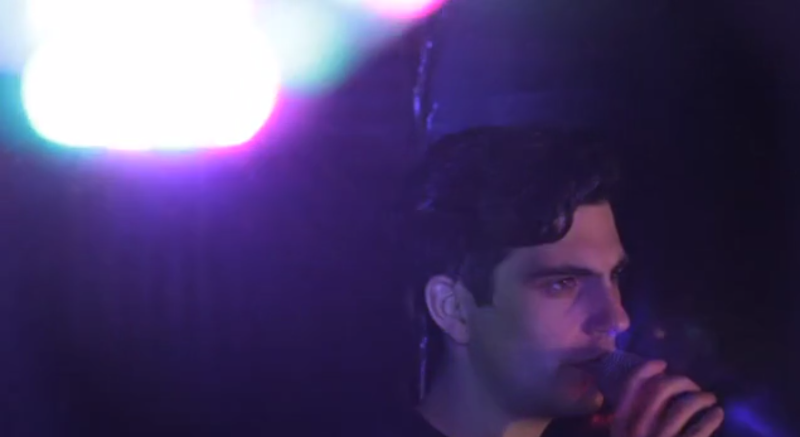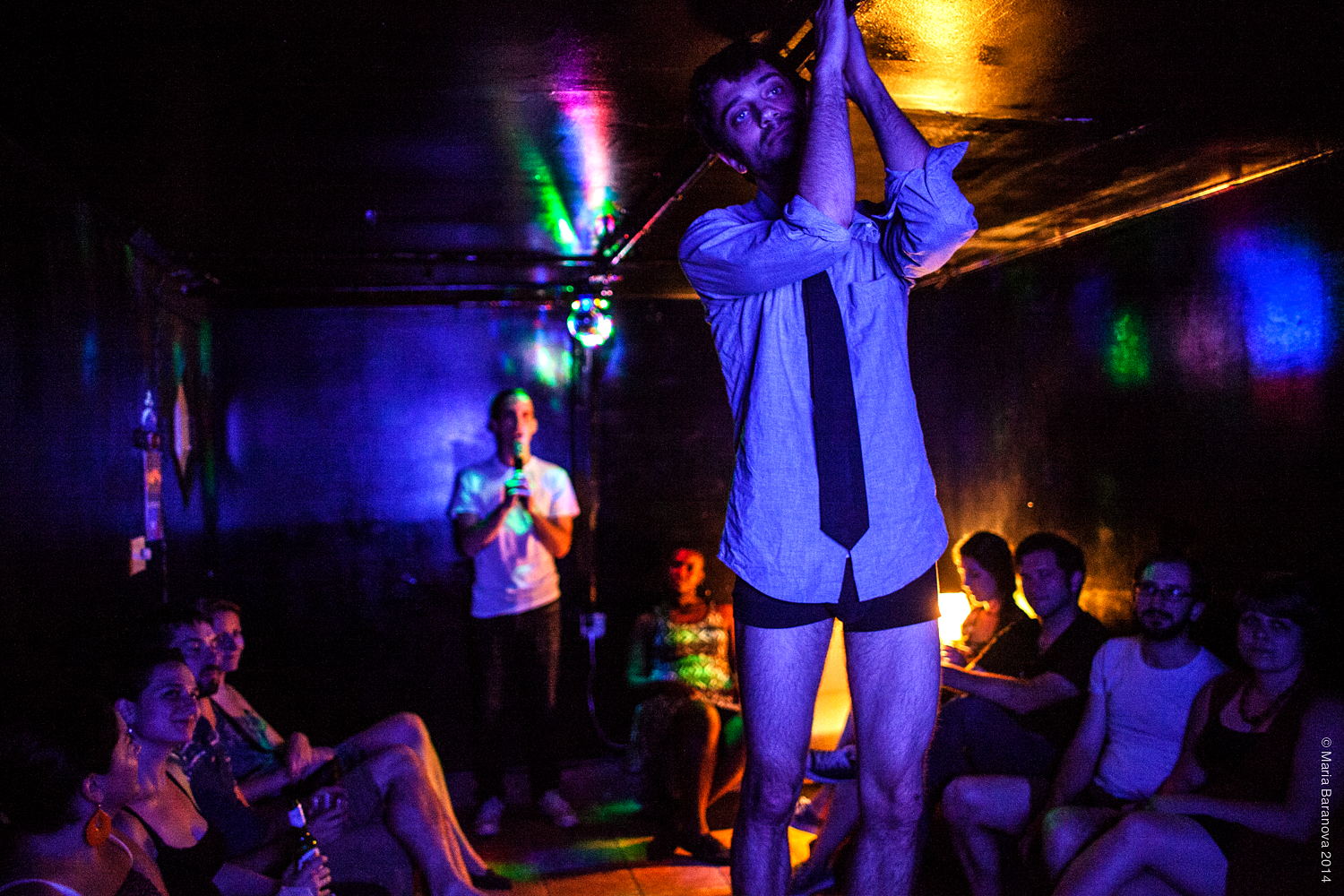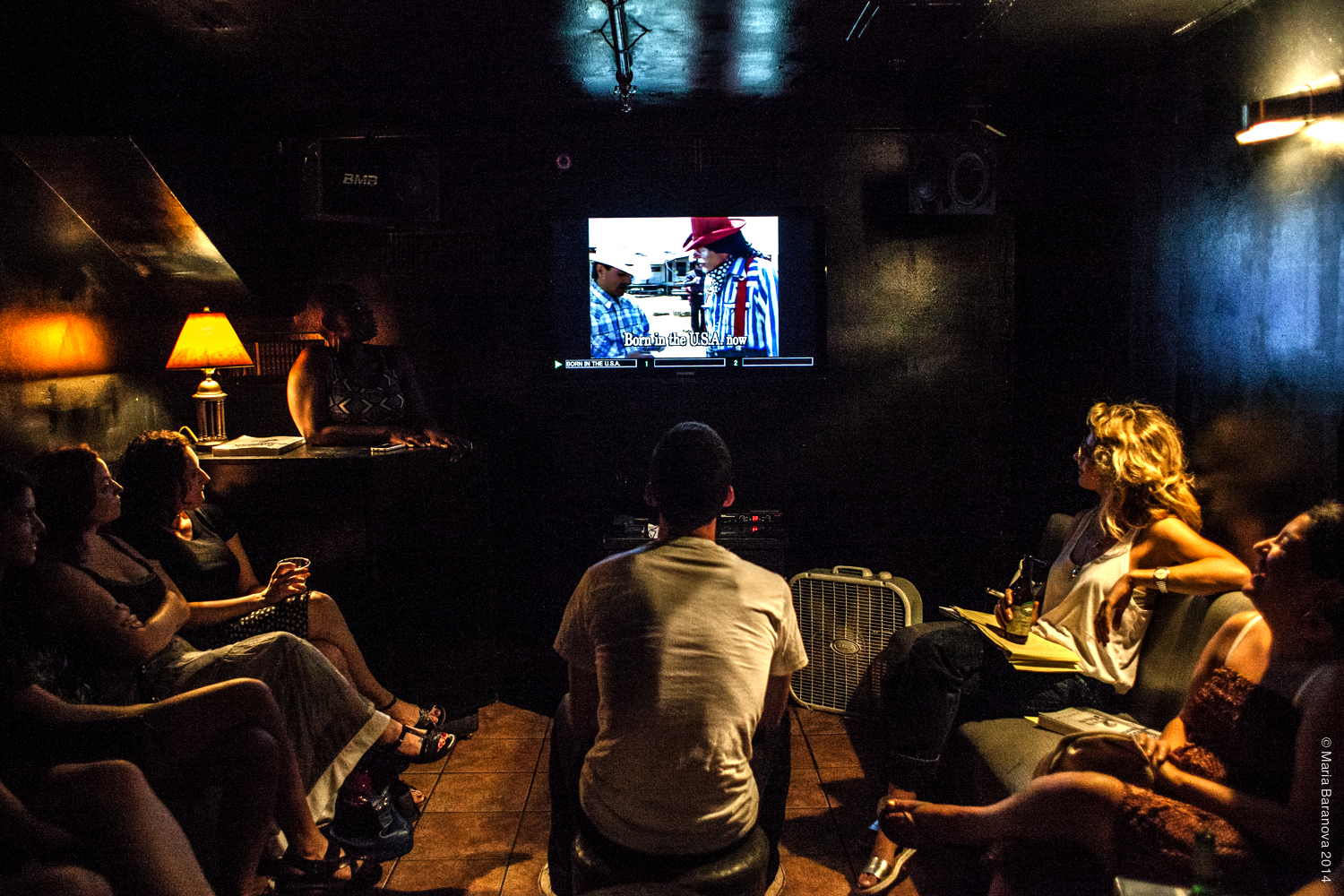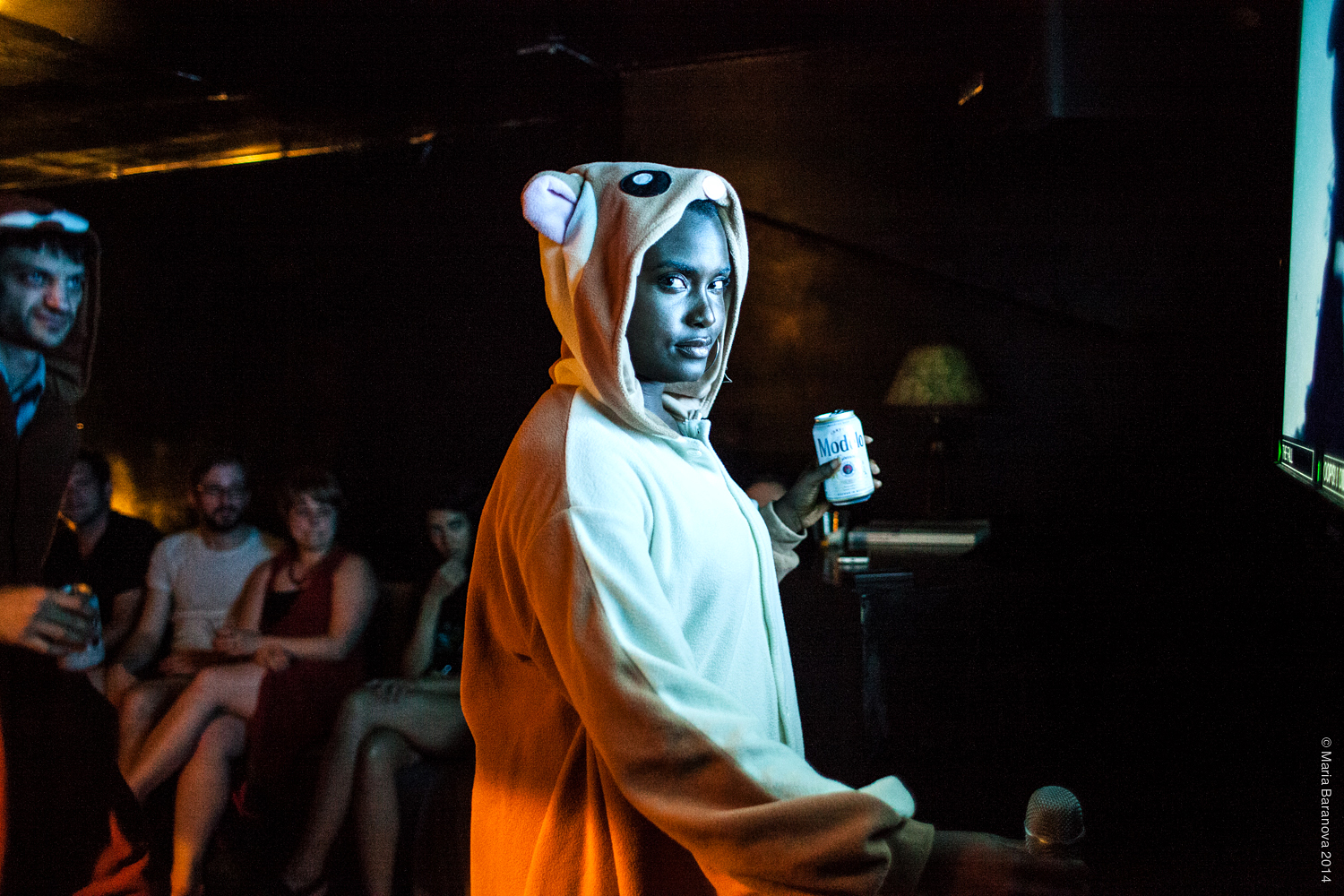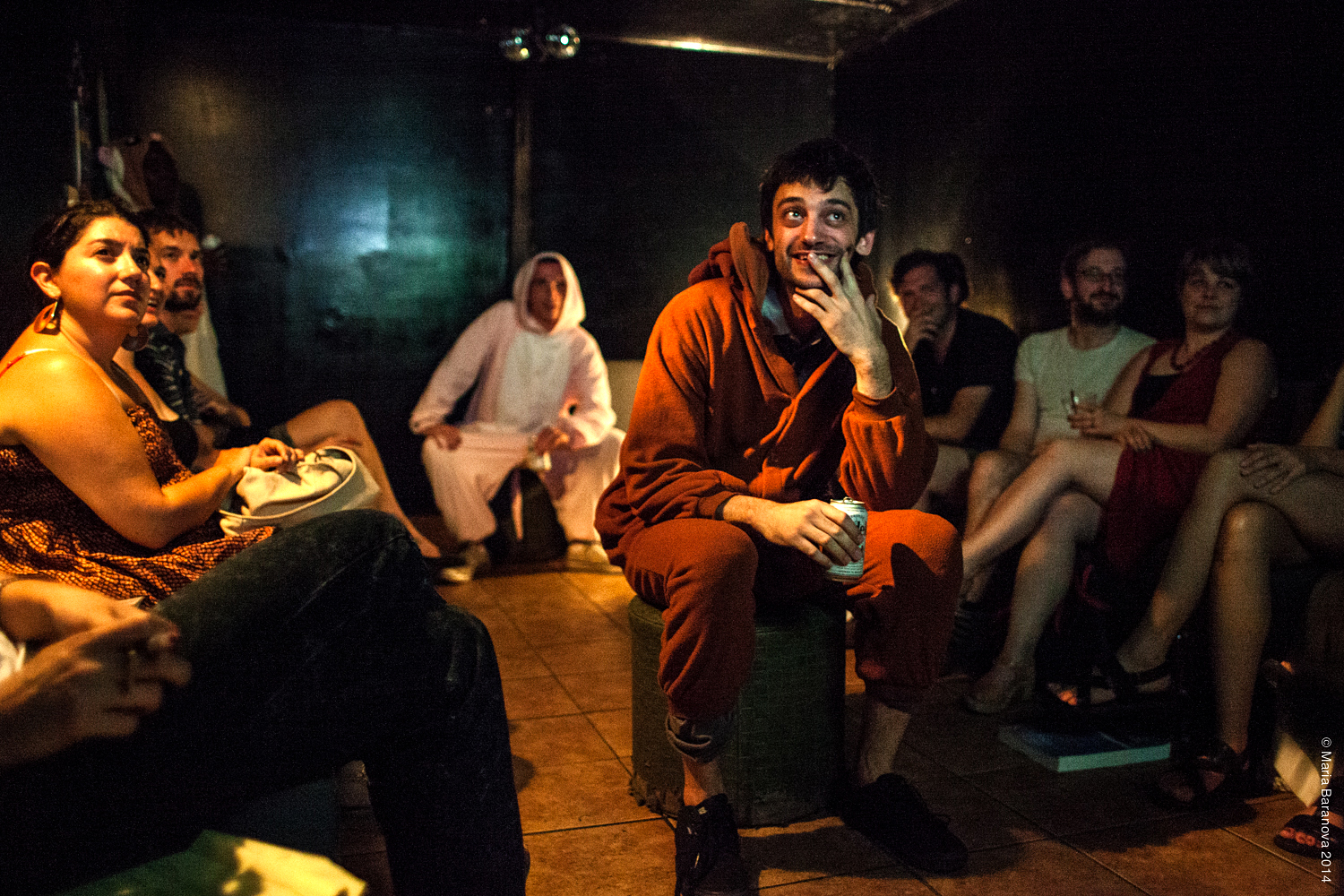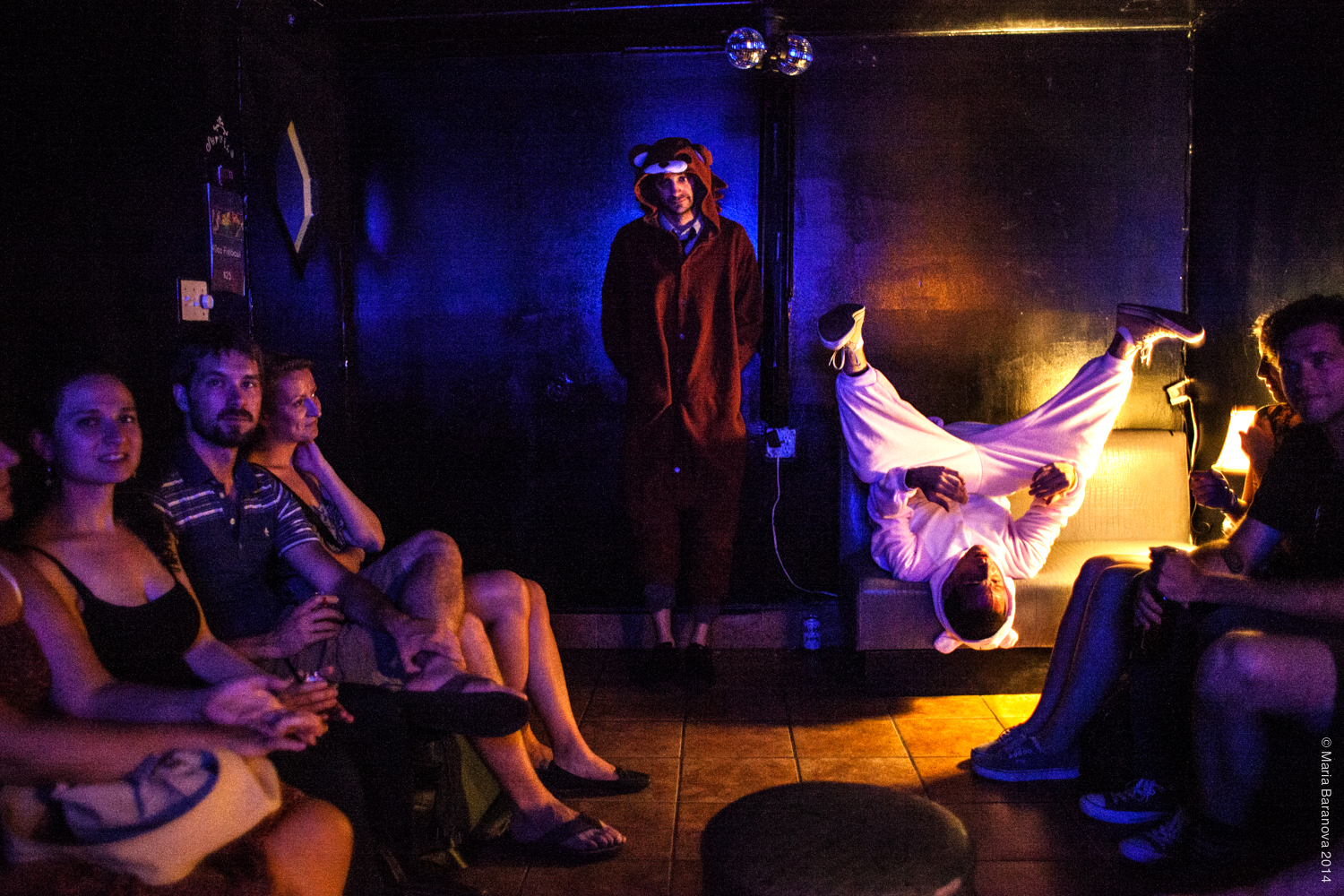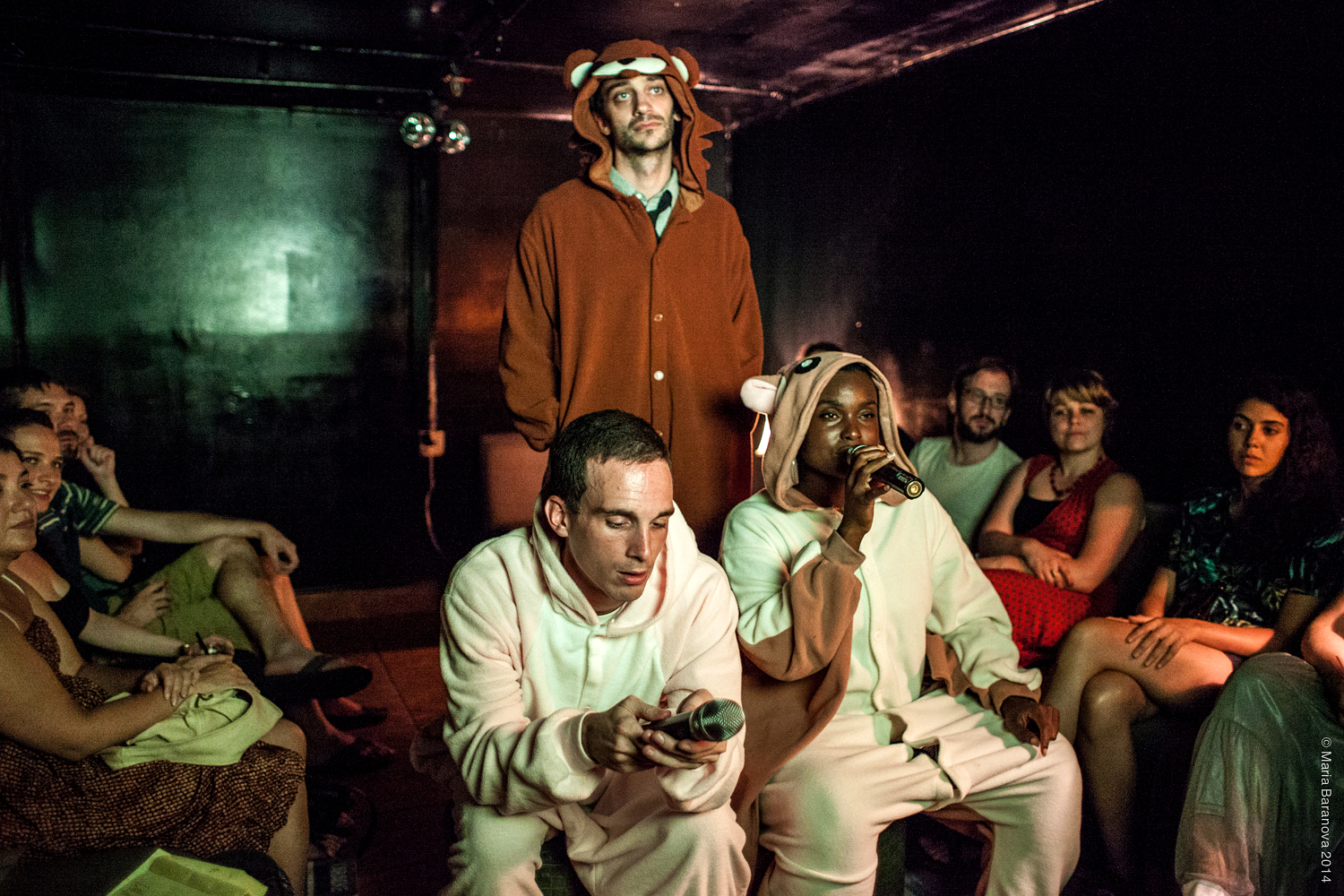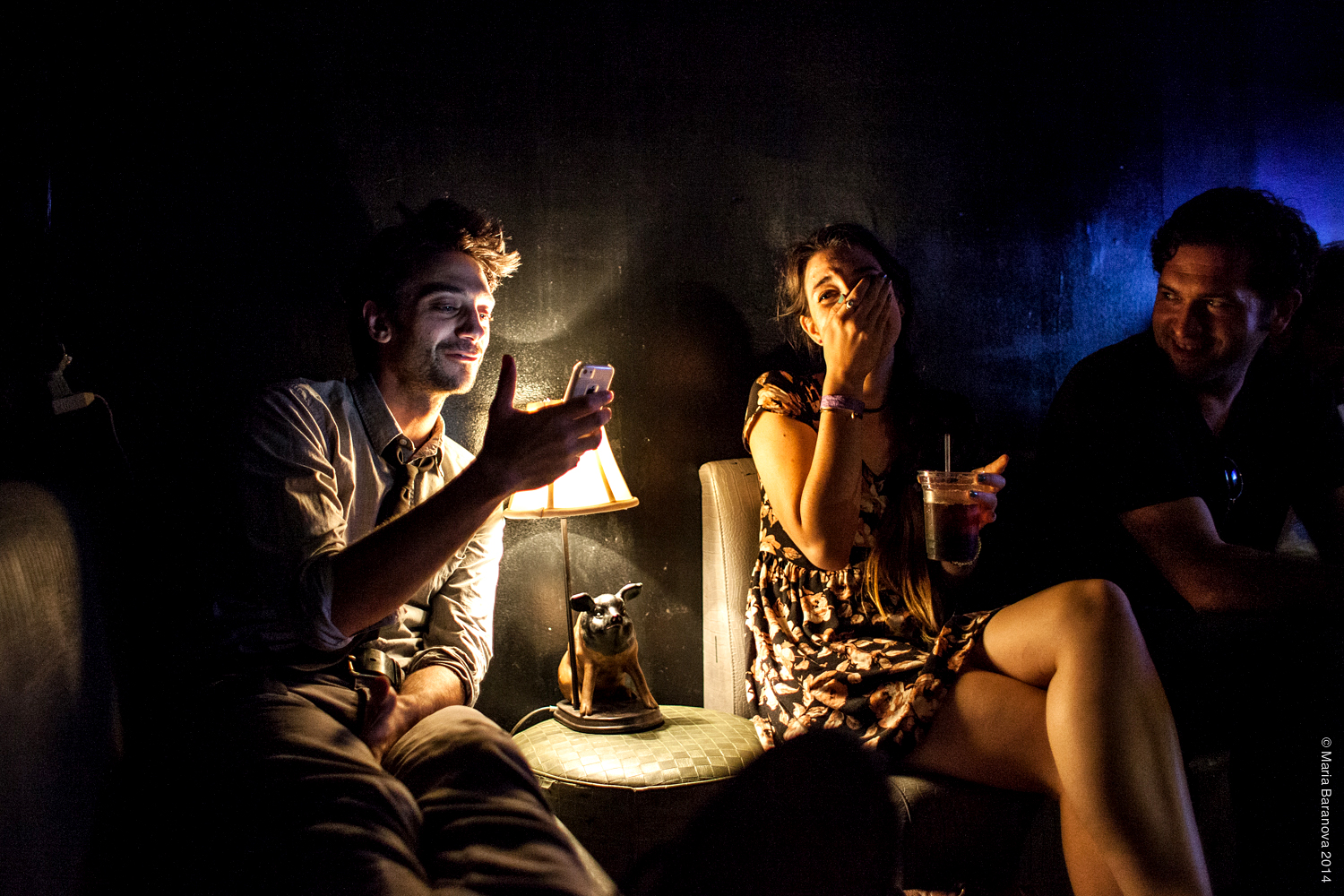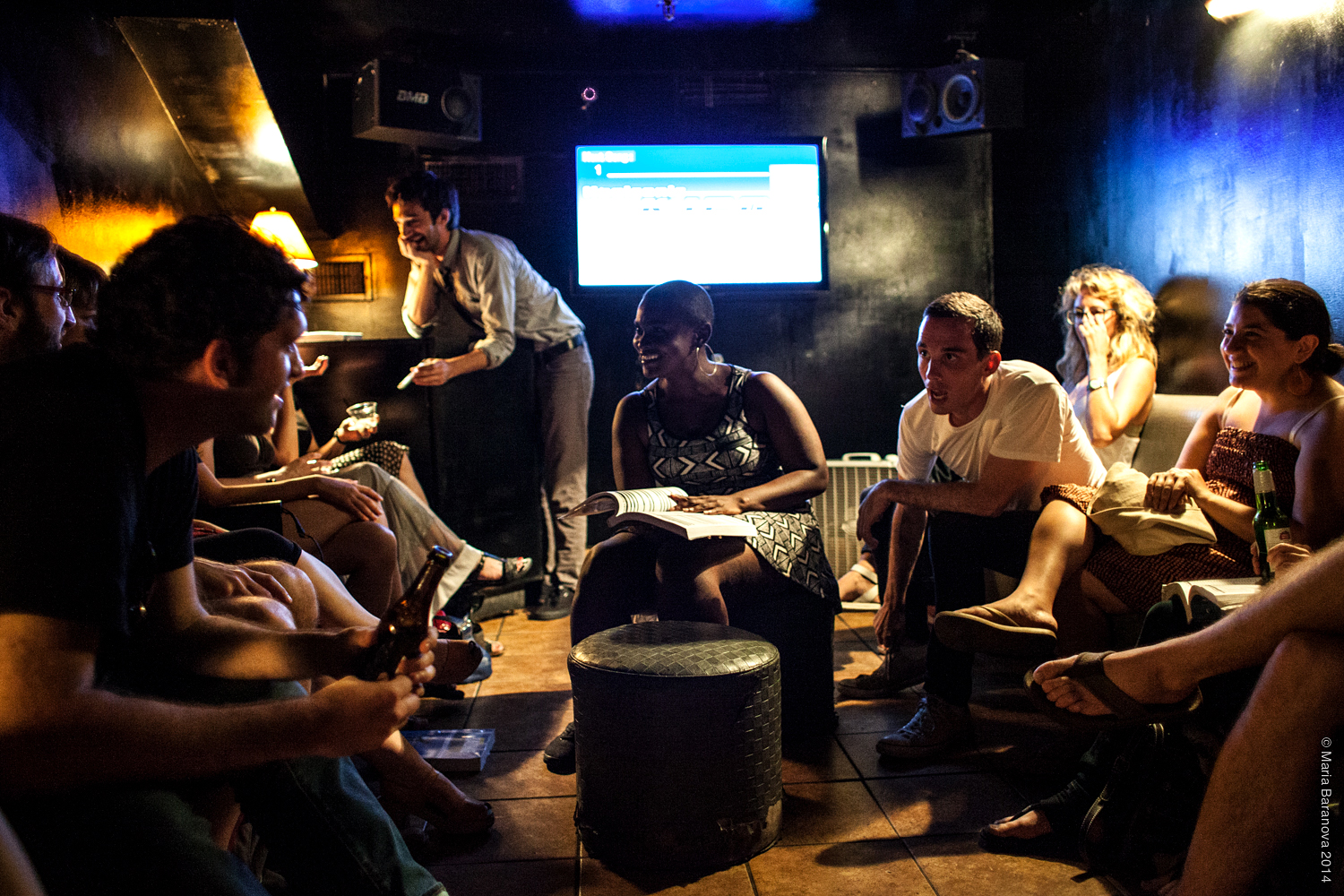Dead Behind These Eyes, (2014)
Performance; 10 person karaoke booth, custom made karaoke videos, microphones, karaoke song books, animal suits, text restructured from John Osborne's Look Back In Anger, Karaoke song book lists, live news-feeds, New York Times crosswords; Found footage video from Ferguson, Gaza, pro-Vietnam war protests in the USA and Gezi Park protest footage shot by Studio4Istanbul.
Performed: Sing Sing Karaoke, NYC
Artists: Kathryn Hamilton/sister sylvester, Lori E. Parquet, Nick Lehane, Brandt Adams, Daniel Kublick, Brian Oh.
'Dead Behind These Eyes' is a performance in a karaoke room about political apathy, pop music, love. Three characters rail against the world, and mourn the big, bold, important lives they were supposed to live, drowning their sorrows in booze, songs, sex, and cigarettes. Dead Behind These Eyes juxtaposes spoken lyrics from Jeff Buckley, Talking Heads, Prince and other pop artists against video footage of political upheavals and social strife, including Peter Whitehead's rarely seen 1969 film The Fall, which documents New York in the late 1960s, and original footage of art actions performed during the Gezi Park protests by Sister Sylvester collaborators, Studio 4 Istanbul, Turkey. Using text inspired by John Osborn’s iconic play of dissatisfied youth, 'Look Back In Anger', alongside lyrics from Britney Spears, Jeff Buckley, Prince, and found footage video from contemporary and historical protests that are repurposed for the karaoke screen, this piece explores political and social participation through the microcosm of the karaoke parlor.
Press:
New York Times Critics Pick: “Tuneful Rage, with a Chaser: Prepare for a night of off-key confessions, slurred lyrics, intergenerational strife and bottomless shot glasses”.
New York Theater Review: “Dead Behind These Eyes is unlike any other show out there. It is a new genre. […] The cast of three are truly brilliant. They’ll ask you what music you like, invite you to take online sex quizzes, and, if you’re lucky, Kublick may suck on your arm. Kathryn Hamilton’s staging is specific, organic, verging on symphonic. She expertly conducts her charismatic cast from frothy absurdity into darker depths. […] In a powerful tableau, Kublick and Adams vigorously wrestle while Parquet sits unmoved, consumed by watching Ferguson riot videos on her phone. In another sequence, footage of Gaza bombing is juxtaposed with pro-Vietnam protests on the karaoke TV screen.”
Exeunt: “There’s not a lot of theater these days that really confronts the audience in that manner. The braver the audience, the better it would work, otherwise the risk is that it’s battering rather than engaging. But if you could take it, it was pulse racing […] Using images of social protest, American iconography, and controversial topics such as the Vietnam War and the recent confrontations in Ferguson, Mississippi, the play tried to tie the songs, images, and Look Back in Anger vignettes to the political. The Osborne voices untethered from the misogyny or class disputes of the original play allowed the pure claustrophobia of the human conflict he wrote about to build in this small karaoke space and his impotent rage took on new meaning when juxtaposed against the political imagery.
New York Times (review) : “The play makes a refrain out of a taunt in “Look Back in Anger”: “Why don’t we have a little game? Let’s pretend that we’re human beings, and that we’re actually alive. Just for a while.” As the actors intermittently whip out their smartphones, or we stare at the monitor, the game here demands that everyone’s attention is partial and fragmented. That may be who we’ve become as a society: people sitting together in a room, absorbed in our screens and failing to connect.”
Time Out : “Sister Sylvester's performance piece, performed immersively at East Village karaoke bar Sing Sing, melds the 1956 John Osborne drama Look Back in Anger with spoken pop lyrics and video footage of protests.”
Theaterscene: “A perplexing theatrical entertainment”
